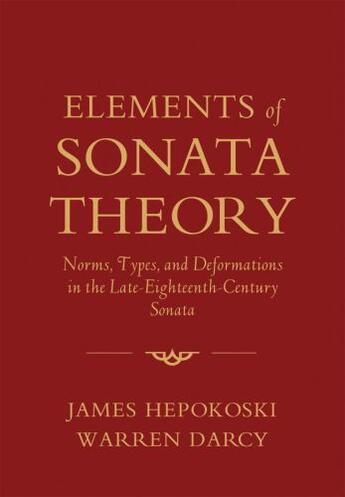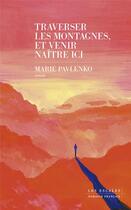-
Nombre de pages : (-)
-
Collection :
(-)
-
Genre :
(-)
-
Thème :
Non attribué
-
Prix littéraire(s) :
(-)
Résumé:
Elements of Sonata Theory is a comprehensive, richly detailed rethinking of the basic principles of sonata form in the decades around 1800. This foundational study draws upon the joint strengths of current music history and music theory to outline a new, up-to-date paradigm for understanding... Voir plus
Elements of Sonata Theory is a comprehensive, richly detailed rethinking of the basic principles of sonata form in the decades around 1800. This foundational study draws upon the joint strengths of current music history and music theory to outline a new, up-to-date paradigm for understanding the compositional choices found in the instrumental works of Haydn, Mozart, Beethoven, and their contemporaries: sonatas, chamber music, symphonies, overtures, and concertos. In so doing, it also lays out the indispensable groundwork for anyone wishing to confront the later adaptations and deformations of these basic structures in the nineteenth and earlier twentieth centuries.
Combining insightful music analysis, contemporary genre theory, and provocative hermeneutic turns, the book brims over with original ideas, bold and fresh ways of awakening the potential meanings within a familiar musical repertory. Sonata Theory grasps individual compositions-and each of the individual moments within them-as creative dialogues with an implicit conceptual background of flexible, ever-changing historical norms and patterns. These norms may be recreated as constellations "compositional defaults," any of which, however, may be stretched, strained, or overridden altogether for individualized structural or expressive purposes. This book maps out the terrain of that conceptual background, against which what actually happens-or does not happen-in any given piece may be assessed and measured.
The Elements guides the reader through the standard (and less-than-standard) formatting possibilities within each compositional space in sonata form, while also emphasizing the fundamental role played by processes of large-scale circularity, or "rotation," in the crucially important ordering of musical modules over an entire movement. The book also illuminates new ways of understanding codas and introductions, of confronting the generating processes of minor-mode sonatas, and of grasping the arcs of multimovement cycles as wholes. Its final chapters provide individual studies of alternative sonata types, including "binary" sonata structures, sonata-rondos, and the "first-movement form" of Mozart's concertos.
Donner votre avis














